By: Brian Scott, President and Chief Information Officer at ClearTone Consulting, LLC
A once popular celebrity proudly, and rather oddly, proclaimed during an interview – “Winning!”. For those who followed the story, we’d likely respond with “yeah, not so much.” If only it was as easy as simply making exclamations, but life and business do not work that way. One must have a plan, a sound strategy, and then execute that plan effectively. Sure, strategies must be agile and evolve to address changing landscapes, but a successful business stays laser-focused on their plan. In today’s complex world, creating and executing those plans well often requires businesses to tap into proven expertise outside of their organization. How can we expect any single company to be the best at all disciplines? It is a wise leader that understands the company staff’s strengths and gaps and quickly finds the right help to support those critical areas. As the pace of change quickens with every year, these leadership decisions become even more fundamental to survival. This article takes a brief view of this challenge through the lens of information technology.
Although some within the Exhibitions and Meetings Industry may believe we’ve been a bit insulated from the continually raucous environment of the technology-driven consumer marketplaces, there is no doubt that this is no longer the case. The havoc wreaked by COVID-19 has broken all those loosely bound constraints on business process, innovation, adoption, and consumer behavior and thrust an entire industry headfirst into uncharted and frothy waters. I view this change more like a tension that had been building over years, if not decades, and resulted in a collective and sudden snap. But whether change comes in bursts or steady flows, it surely does and will forever do so. So let’s examine the nature of tech-driven change.
Many of you are likely familiar with the Pareto distribution. Within one organization in which I worked, we commonly called it “The Hockey Stick”. It’s also referred to as the Power-Law distribution and is related to that commonly known 80/20 rule (80% of our revenue comes from just 20% of our customers). Many aspects of business seem to follow this curve. This shape is an actual statistical distribution, much like the all-too-familiar normal distribution curve, but in reality far more common to come across in business. There are not too many business cases I’ve experienced that followed a normal distribution. However, one normal distribution curve that I have experienced and is still very applicable today is the Technology Adoption Life Cycle shown below.

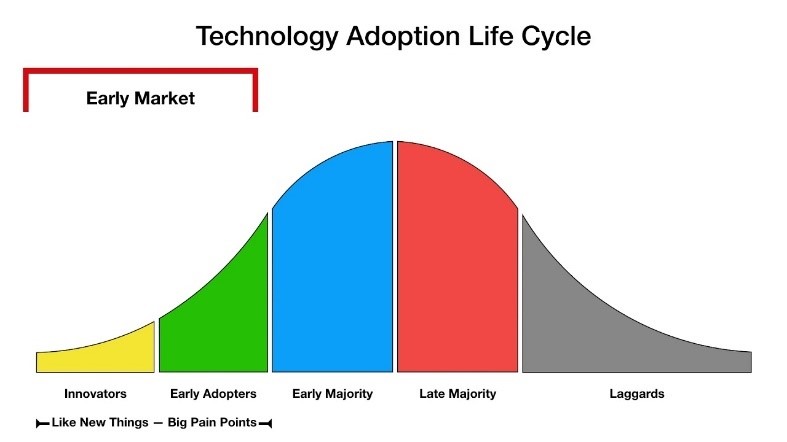
Although I have experienced this adoption behavior first-hand through the technology products I’ve been involved with, the overall timeline from the beginning to the end of this curve continues to grow shorter every year. These days, much less like mountains, the “normal” distribution can feel more like small, quick speed bumps in succession.
Why talk about the Pareto curve? It’s a basic logarithmic curve that also represents the increasing rate of change we all are experiencing in technology, business, and even personal lives. And guess what, things are actually speeding up! There’s no big surprise here. A Harvard Business Review article written in 2019 entitled “The Pace of Technology Adoption is Speeding Up” (kind of gave away the punch line there, right?) shows graphically how adoption of new consumer technologies has quickened in the U.S. over the last several decades.
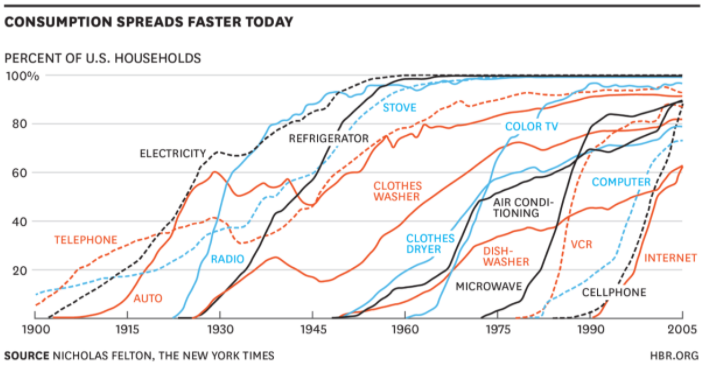
The telephone reached 10% adoption in 30 years but tablet devices to broke that milestone in less than five years. Similarly, it took 39 years for telephones to reach 40% penetration, yet smartphones accomplished that mark in under 10 years (and that’s if we define a smartphone as the introduction of the BlackBerry, which may be questionable). Wherever you look, for any subject that relates to technology, you see this curve, over and over again. How about the share of the population using the Internet? Or mobile cellular subscriptions? There may be slight variations in the slope and when the adoption began, but the Pareto curve is clearly present.

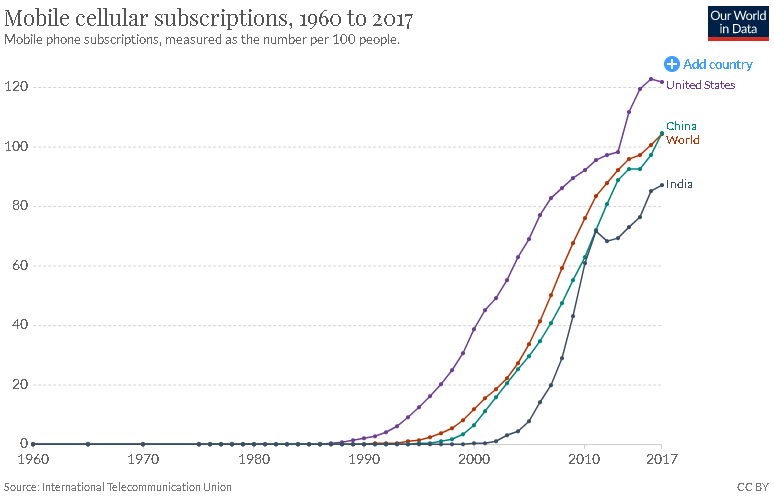
Why worry? Technology is making everything easier to manage, right? Well, maybe not so much. Of course, much has been simplified, but along with a broader and deeper level of functionality and capability, there is an associated complexity that underlies much of the technology forcing its way into every aspect of our lives. But we are frequently in a good news, bad news situation when it comes to increased technology. For example, that newly adopted HR system puts all our organization’s personnel management functions in one centrally located cloud service. We can retire those three legacy systems and plethora of unsecured spreadsheets floating around – that’s the good news! Here’s the bad news, or at least we’ll call it “reality check”. First, we have to import all our data correctly, with all the fields cleaned and organized, and that data is coming from six different locations. And once imported, we need our operations management system and our payroll system to be integrated in real time. And our cloud service provider was just merged with another firm and we’re being forced to migrate to another system. And the executive report we once relied upon is not available in this new system so we need to hire a third party technology consultant to customize the output. And, and, and…
What about this thing called “Cloud”? It’s a word that has almost lost its meaning due to overuse. Should all your servers be in the cloud? Which cloud provider is the right one? Or better yet, is there any difference between them at all? (You’re telling me we have to re-write the application we just developed 6 years ago to run completely from cloud microservices?) As-a-service is also very popular nowadays. Software-as-a-service. Infrastructure-as-a-service. Platform-as-a-service. Can we buy sanity-as-a-service yet?
As fast as adoption of cloud services has been, let’s not lose sight of the fact that we’re still very early in the Pareto elbow. Here’s a fun fact to ruminate upon. In 2019 the cloud services market was valued at $264.8 billion (yes, that’s a “B”). It’s expected to grow at a CAGR of 16.4% reaching $927.5 billion by 2027. Wow. What can you say but just “wow”?
One would be completely remiss in the discussion of complexity if the topic of cybersecurity was not generously sprinkled on top. The following data can, quite honestly, be terrifying to the aware business owner. I’m not trying to fan the flames of fear, just simply highlighting how fast our world is changing and introducing new, complex challenges. You’ll see that pesky Pareto curve in play again in the total damages in dollars by year.
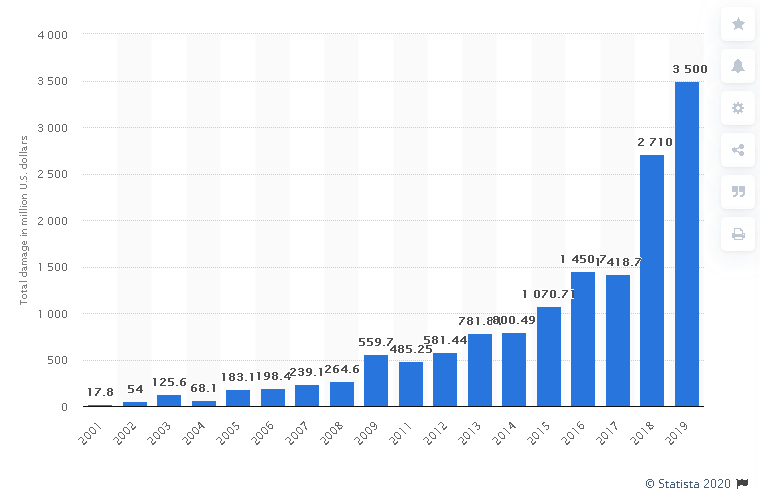 For business leaders, the two most disturbing data points regarding security risks are the continual rise of insider threats and the rising costs of cybersecurity protection. It’s a stark reality that regardless of how much a company spends on hardening their internet facing environments against the faceless bad actors that plot against us from their bedrooms 5000 miles away, or just next door, the biggest risks to your company’s valuable customer data, financial information, and corporate IP lies in the hands of your trusted employees. To make matters worse, it’s not even the disgruntled or malicious insiders that are the primary concerns, but it’s the well-intentioned yet uninformed and untrained employee that accidently falls for the well-formed, well-timed spear phishing attack.
For business leaders, the two most disturbing data points regarding security risks are the continual rise of insider threats and the rising costs of cybersecurity protection. It’s a stark reality that regardless of how much a company spends on hardening their internet facing environments against the faceless bad actors that plot against us from their bedrooms 5000 miles away, or just next door, the biggest risks to your company’s valuable customer data, financial information, and corporate IP lies in the hands of your trusted employees. To make matters worse, it’s not even the disgruntled or malicious insiders that are the primary concerns, but it’s the well-intentioned yet uninformed and untrained employee that accidently falls for the well-formed, well-timed spear phishing attack.
This growing cybersecurity challenge quickly becomes a classic risk vs. cost benefit analysis problem. Some amount of risk is inherent in the system, so how do business leaders make the right decisions on this spend? Large companies with CIO’s, CISO’s, and skilled finance executives can dive deep into quantifying risk and benefits to help inform leadership budgeting decisions, but this analysis is costly and out of reach to many smaller or mid-sized organizations.
But enough about risk and cyber criminals. How do things look if we turn our attention to our immediate competitors and industry? Surely the view will be a little more comforting. Don’t hold your breath as a little thing called creative destruction is alive and well and on the rise. The 33-year average tenure of companies on the S&P 500 in 1964 narrowed to only 24 years by 2016 and is forecast to shrink to just 12 years by 2027. If this is not a loud enough warning, let’s state it this way: About half of the current S&P 500 will be replaced in the next 10 years.
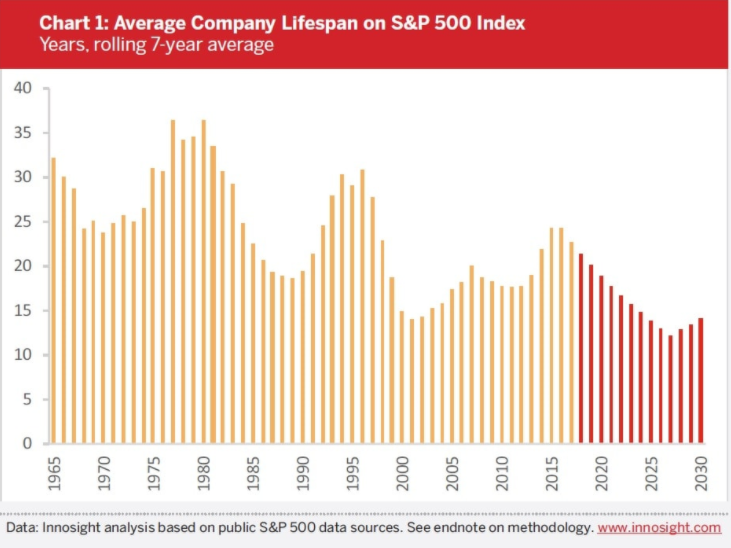
This disruption is not only true for the largest companies but extends all the way down to small businesses and no doubt associations as well. There are certainly instances where entire industries are disrupted by an unforeseen force. COVID-19 has had that effect on so many in retail, food services, transportation, hospitality, and the meetings and events industries. But just as much disruption, if not more, is occurring naturally from proprietary advances and innovations that have drastic implications within a competitive environment. These changes are very often sparked or fueled by technological innovation or effective and timely adoption of information technologies. These are the types of changes that can be under your control. One study from Innosight found that 80% of executives agreed or strongly agreed that their company needed to transform – that is to change their core offerings or business model in response to rapidly changing markets.
Critical to addressing this very complex and dynamic business environment is a strong technology strategy thoroughly integrated with business priorities. In fact, I hesitate to use the word ‘integrate’ in that sentence as it indicates that technology strategy and business priorities are separate and must come together. That is old-school thinking. Today, any business’s strategy must contain, if not be built upon, a strong technology foundation.
Now and from this point forward the answer to these critical leadership questions must be based in technology.
- How will we grow?
- How will we differentiate ourselves from our top competitors?
- How will we attract the best employees and keep them engaged?
- How will we control our costs while upgrading our capabilities?
- What is our next product/service line?
- How can we serve our customers or members better and increase retention?
- How do we best protect our reputation and brand?
- What’s the best way to ensure reliability and scalability of our services?
There is good news awaiting within this challenge. There is plenty of professional and experienced assistance available. Just like so many functional specialties have branched out of the corporate walls to become entire service industries unto themselves, such as accounting and finance, marketing, sales, customer service, software development, and managed service providers, so now too has strategic technology leadership reached its time and calling. Driven by market demand and intense need, IT executives with decades of experience have created consulting organizations to provide the strategic and operational execution leadership required for today’s businesses of all sizes. Now high-level expertise is readily available to organizations that have not yet grown to a point to justify their own full-time IT executives.
These professionals can be engaged at the exact level that is custom fit for any specific need or organization. They can join your leadership team on a fractional basis, quickly come up to speed on your competitive pressures and opportunities, understand your growth strategies, help expand the technology vision to support the objectives, and then ensure the right team members are engaged effectively to execute successfully. These engagements could begin as a handful of hours every month to several hours every week, but what’s important is that it doesn’t require these growing small or mid-sized organizations to invest in a fulltime executive right off the bat. For many years, the markets for fractional CFOs or CMOs has existed and has become common practices for growing firms and now the CIO function has joined those ranks.
A well-balanced, experienced, highly functional leadership team is every organization’s best chance to stave off these fierce winds of change, to identify the hidden opportunities lurking around the dark corners, and to be one of the few remaining companies years from now that look back at their journey in proud amazement at the pivots and transformations in which the company not only survived but thrived. It is my hope that you can experience being a part of an organization in that enviable position and collectively exclaim – “Winning!”
Resources
- https://www.visualcapitalist.com/rising-speed-technological-adoption/
- https://hbr.org/2013/11/the-pace-of-technology-adoption-is-speeding-up#:~:text=It%20took%2030%20years%20for,15%20before%20they%20became%20ubiquitous
- https://ourworldindata.org/technology-adoption
- https://www.prnewswire.com/news-releases/cloud-services-industry-2020-2027-key-trends–growth-opportunities-301096078.html
- https://www.cybersecurity-insiders.com/wp-content/uploads/2016/09/Insider-Threat-Report-2018.pdf
- https://www.innosight.com/insight/creative-destruction/
- https://www.statista.com/statistics/273550/data-breaches-recorded-in-the-united-states-by-number-of-breaches-and-records-exposed/